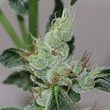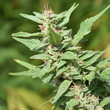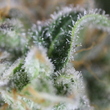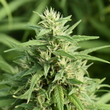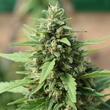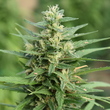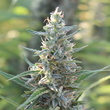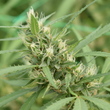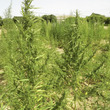Introduction
Currently, the legalization and regulation of Cannabis in many countries is demanding the development of analytical methods which provides reliable results without comprising analysis time. Although gas chromatography (GC) is the preferred technique for the determination of cannabinoids, it requires a series of tedious procedures to finally obtain the result. In this sense, near infrared spectroscopy (NIRS) has been employed in many applications due to its great benefits, requiring a minimal sample preparation, being a quick and non-destructive technique. Herein, a fast economical, robust and environmentally friendly method is proposed allowing the quantification of the main cannabinoids present in Cannabis sativa L. samples.
Material and méthods
Cannabis samples of different chemotypes from 11 medicinal varieties registered by Phytoplant at CPVO were selected, namely: Aida, Beatriz, Divina, Juani, Magda, Mati, Moniek, Octavia, Pilar, Sara and Theresa. These plants were cultivated in various locations and collected from different areas of the plant. Thus, a total of 189 dried and grounded Cannabis samples were used for NIRS calibration. A dispersive NIR spectrometer and a Fourier transform near infrared (FT-NIR) were used for comparison. The wet analysis was carried out by GC-FID using squalene as internal standard. Multivariate analysis was applied to treat the collected spectra using principal component analysis (PCA) to reduce the dimensionality of the data matrix and to retain the maximal amount of variability in the spectral data and partial least squares (PLS) regression method to develop predictive models.
Results
Spectral information and wet analysis results were statistically evaluated by means of standard error values. For that purpose, the calibration and subsequent validation of the predictive models were performed, applying scattering correction and using different region of the spectra. Considering the standard error of calibration (SEC) and cross validation (SECV), a suitable method for the determination of different cannabinoids was accomplished. The residual predictive deviation (RPD) statistics were considered to evaluate the cannabinoids prediction, resulting in good prediction models for Δ9-THC, CBC and CBD. In the case of CBN, Δ8-THC, and CBDV, their models may be used for screening purposes while CBG and Δ9-THCV equations are not yet suitable to be used. Therefore, additional samples should be analyzed to increase the population enhancing the prediction models. The comparison of the predictive ability of the models obtained with the dispersive NIR and the FT-NIR spectrometers show no significant differences between them.
Discusion
This is the first time that NIRS technology is employed for quantitative purposes in the Cannabis field. In this sense, the prediction of the content of cannabinoids in dried and grounded samples may be accomplished in reduced time analysis thanks to the implementation of this technique. In this sense, NIRS offers a faster, simpler and greener method than traditional GC analysis.
Other publications
See more
See more
See more
See more
See more
See more
See more
See more
See more
See more
See more
See more
See more
See more
See more
See more
See more
See more
See more
See more
See more
See more
See more
Ask for information
Can we be of help to you? Do you have any questions about us? Write to us and we will contact you as soon as possible.
